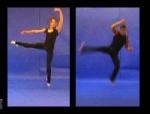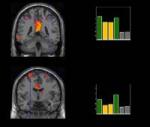Feb 10, 2005
Brain-imaging study on action observation and acquired motor skills
Earlier studies with monkeys revealed that brain cells called “mirror neurons” respond both when we do something, like pick up an object, and when we simply watch someone else do it. It was known that these neurons fire when we perform an action, but it was unexpected that the same cells also fired when we only saw that action being performed. This new study by Calvo-Merino and coll., recently published on the journal “Cerebral Cortex”, goes a step further by showing that such a system operates differently depending on what a person is physically expert at doing.

According to the authors of the experiment, this is the first proof that our personal motor repertoire - the things that we have learned to do - changes the way that our brain responds when we see the movement. In particular, these findings suggest that once the brain has learned a skill, it may simulate the skill without even moving, through simple observation: an injured dancer might be able to maintain his skill despite being temporarily unable to move, simply by watching others dance.

These results provide further support to the I-Learning Project clinical rationale, and justify the use of I-Learning technology to better rehabilitate people whose motor skills were damaged by stroke.
Reference: B. Calvo-Merino, D.E. Glaser, J. Grezes, R.E. Passingham and P. Haggard, Action Observation and Acquired Motor Skills: An fMRI Study with Expert Dancers, Cerebral Cortex, Dec. 2004
13:20 Posted in Mental practice & mental simulation | Permalink | Comments (0) | Tags: mental practice, motor imagery







The comments are closed.